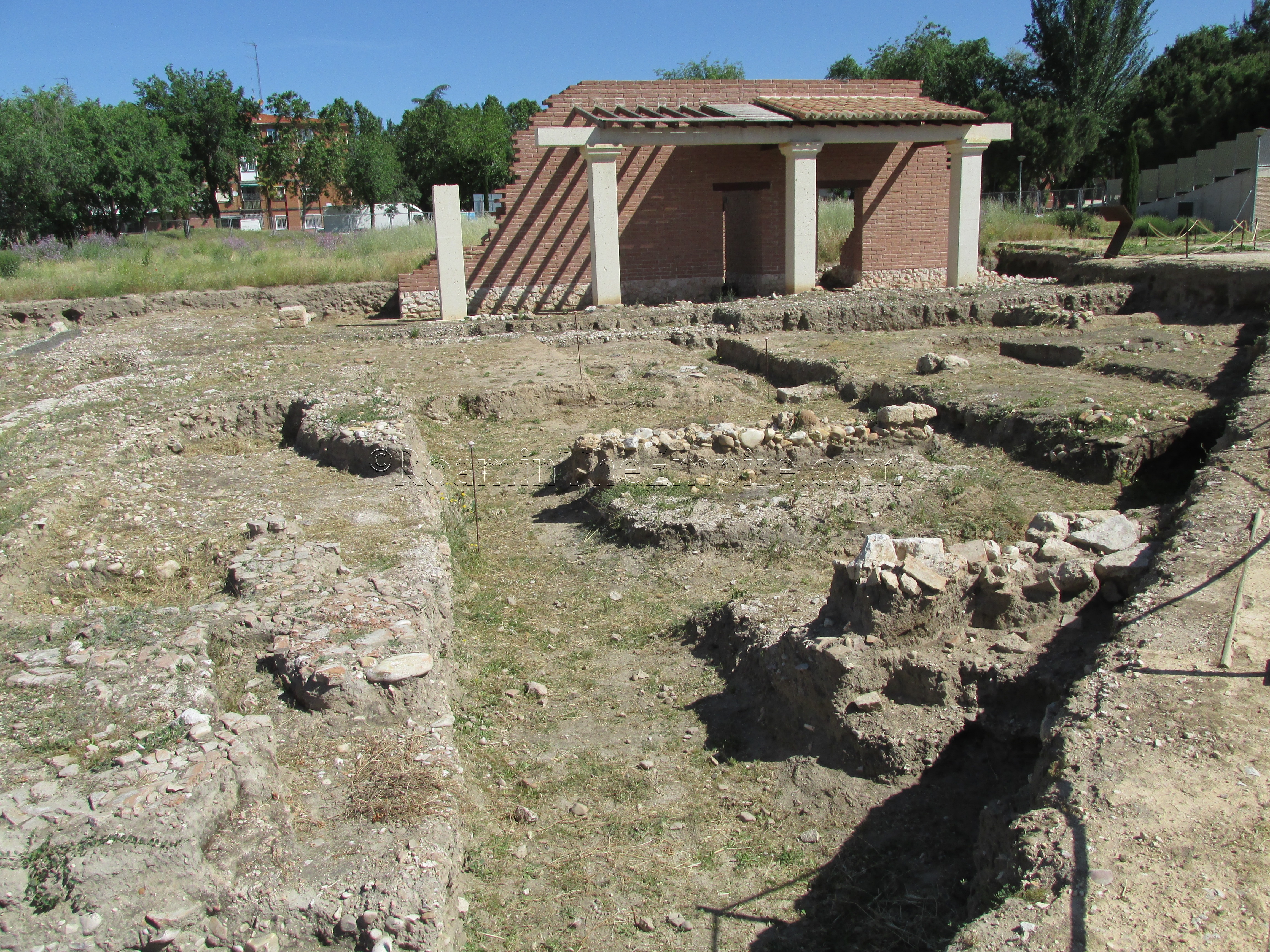
Quick Info:
Address:
Complutum: Ciudad Romana
Camino de Juncal s/n
28802 Alcalá de Henares, Madrid
Hours:
Tuesday-Friday 10:00-14:00
Saturday-Sunday 10:00-14:00, 16:00-19:00
Monday Closed
Admission: 1 Euro
Address:
Museo Arqueológico Regional de la Comunidad de Madrid
Plaza de las Bernardas, s/n
28801 Alcalá de Henares, Madrid
Hours:
Tuesday-Saturday 11:00-19:00
Sunday 11:00-15:00
Monday Closed
Admission: Free
A short walk from the Casa de Hippolytus is the Compltum: Ciudad Romana site. To get to the archaeological park, head east (left out of the Casa de Hippolytus) down Av. de Madrid. Take the first right (Av. Ntra. Sra. de Belén) and continue south down that street. At the first traffic light, turn right on to Camino del Juncal and the archaeological site is on the left just a short ways down the street. To get to the entrance for the site, though, you’ll have to continue down Camino del Juncal until there is a path leading to the south, where you can enter on the west side of the site.
The site is open from 10:00-14:00 from Tuesday to Sunday (closed on Mondays) and is then open again in the afternoon from 16:00-19:00 on Saturdays and Sundays. Admission to the site is 1 Euro.
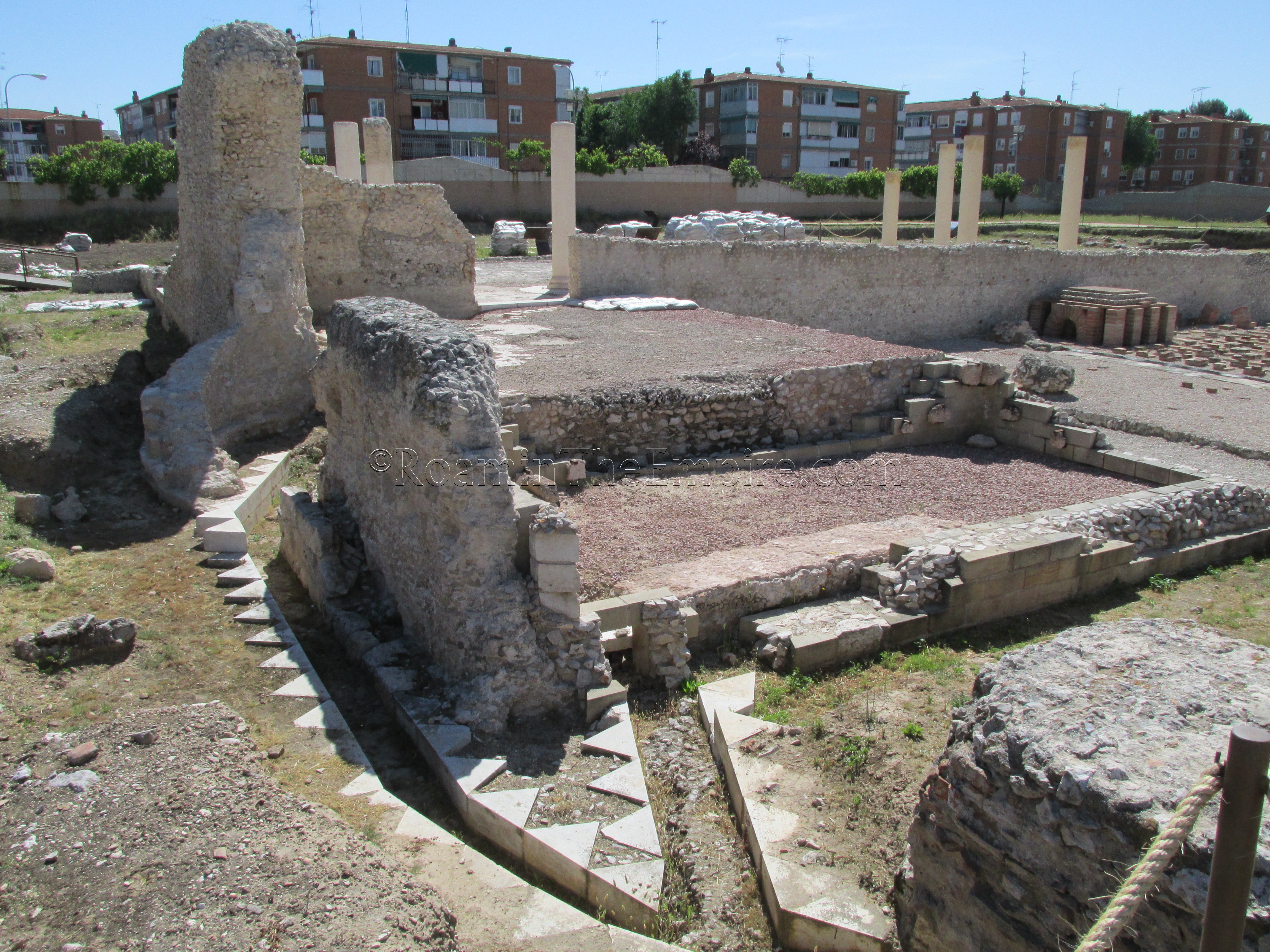
The extent of Complutum beyond the area of the archaeological park is largely known (and displayed on a placard on-site), now mostly covered by apartment buildings and other constructions. The archaeological park features what has been dubbed as Regio II of Complutum, which features the forum area, among others. There are about 19 insulae delineated with respective roads crossing the site, but most of them are actually still largely unexcavated; only a few insulae are excavated.
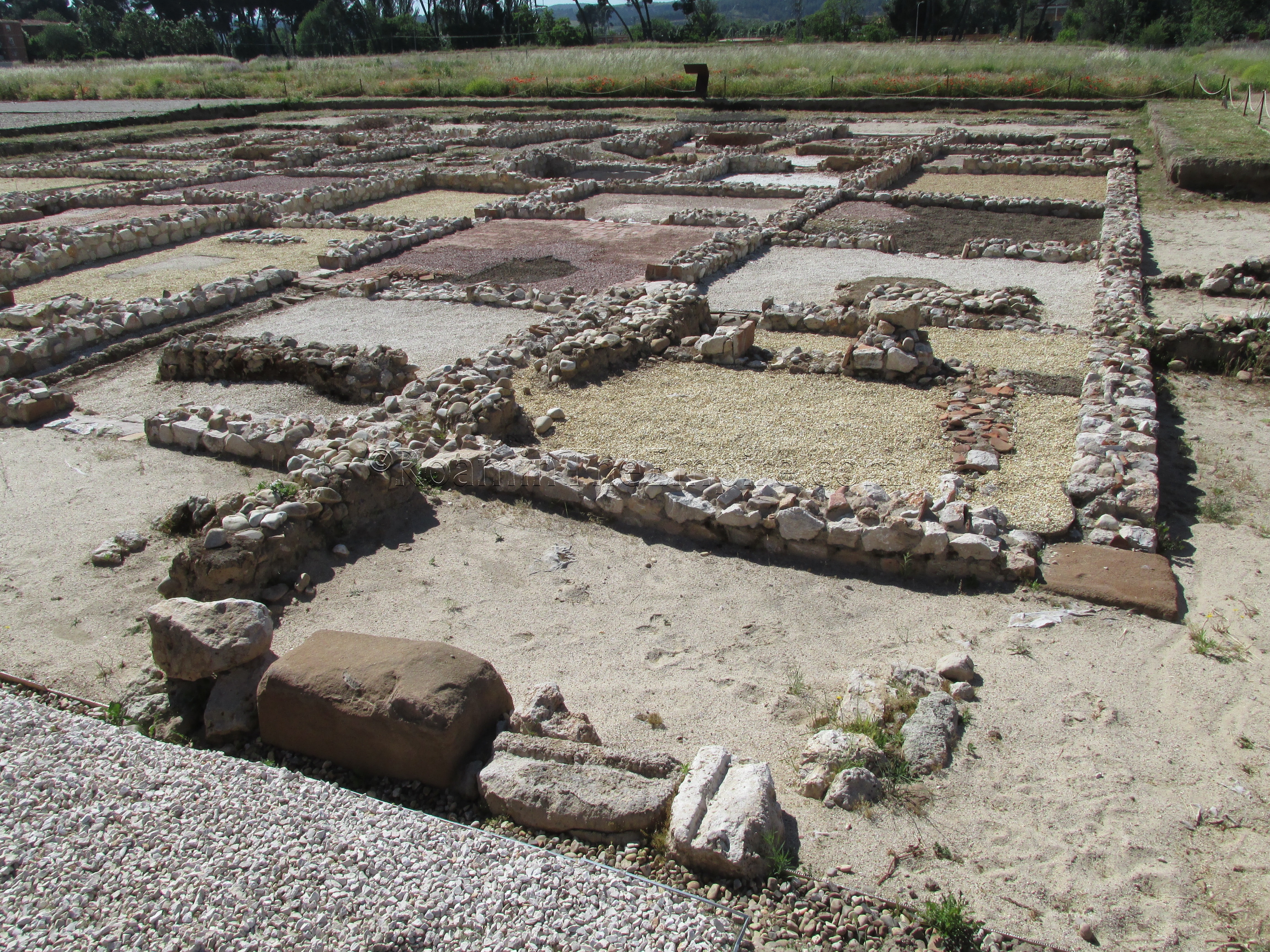
The entrance of the site leads to the road designated as Decumanus III. Most of the insulae in the western portion of the site are unexcavated, but immediately upon entering, the insula immediately to the south is. This insula is named Manzana VII (block VII) and contains three private houses; the Casa de Marte, Casa del Atrio, and the Casa de la Lucerna de la Máscara Trágica. The entire southern half of the insula is taken up by the Casa de la Lucerna de la Máscara Trágica, while the northern half of the insula is divided evenly between the Casa de Marte in the west and the Casa del Atrio in the east.
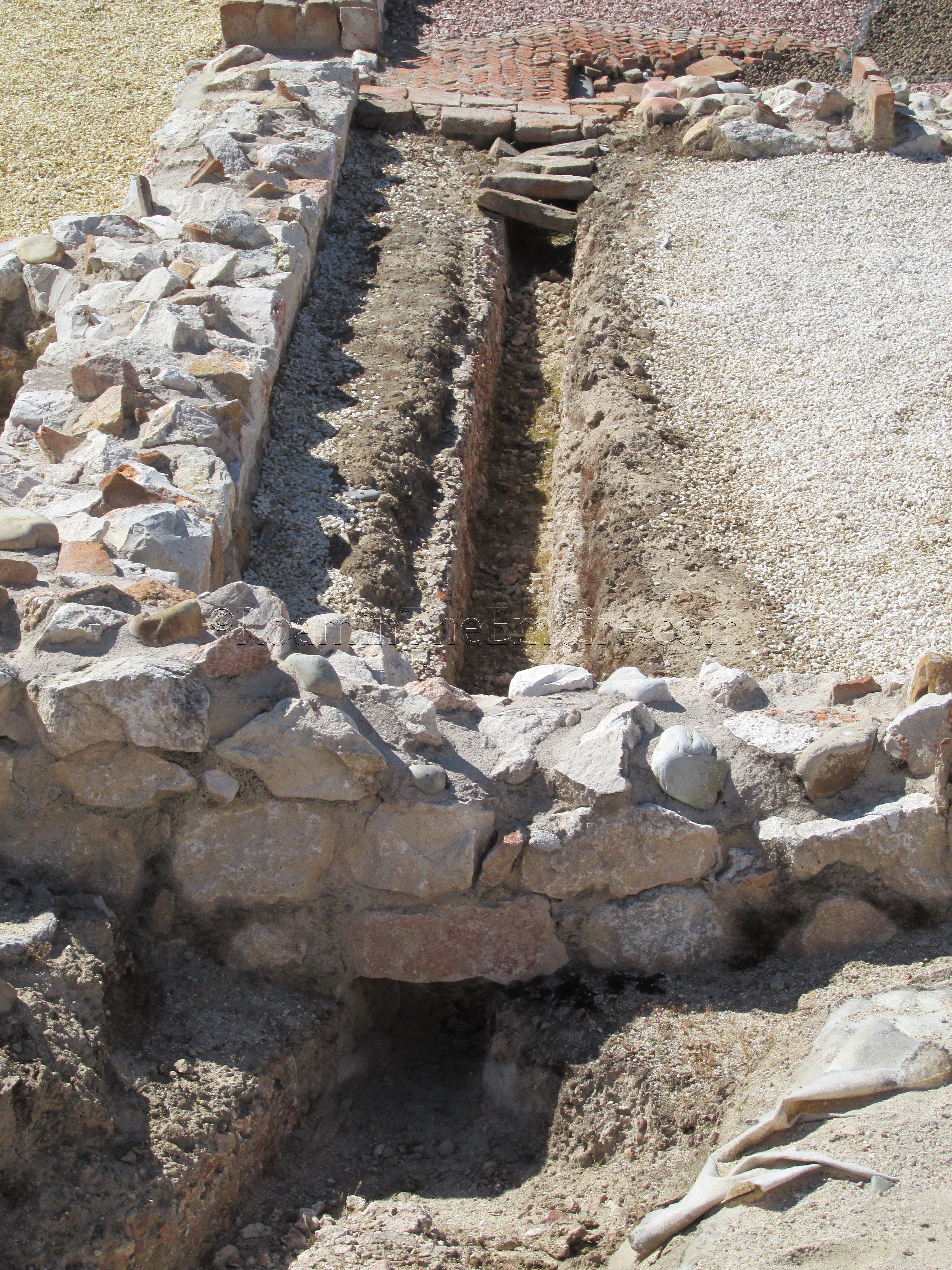
All three houses follow a fairly typical atrium style house plan without any particularly remarkable features to speak of. The two northern dwellings do have their localized draining systems out of the impluvia exposed.
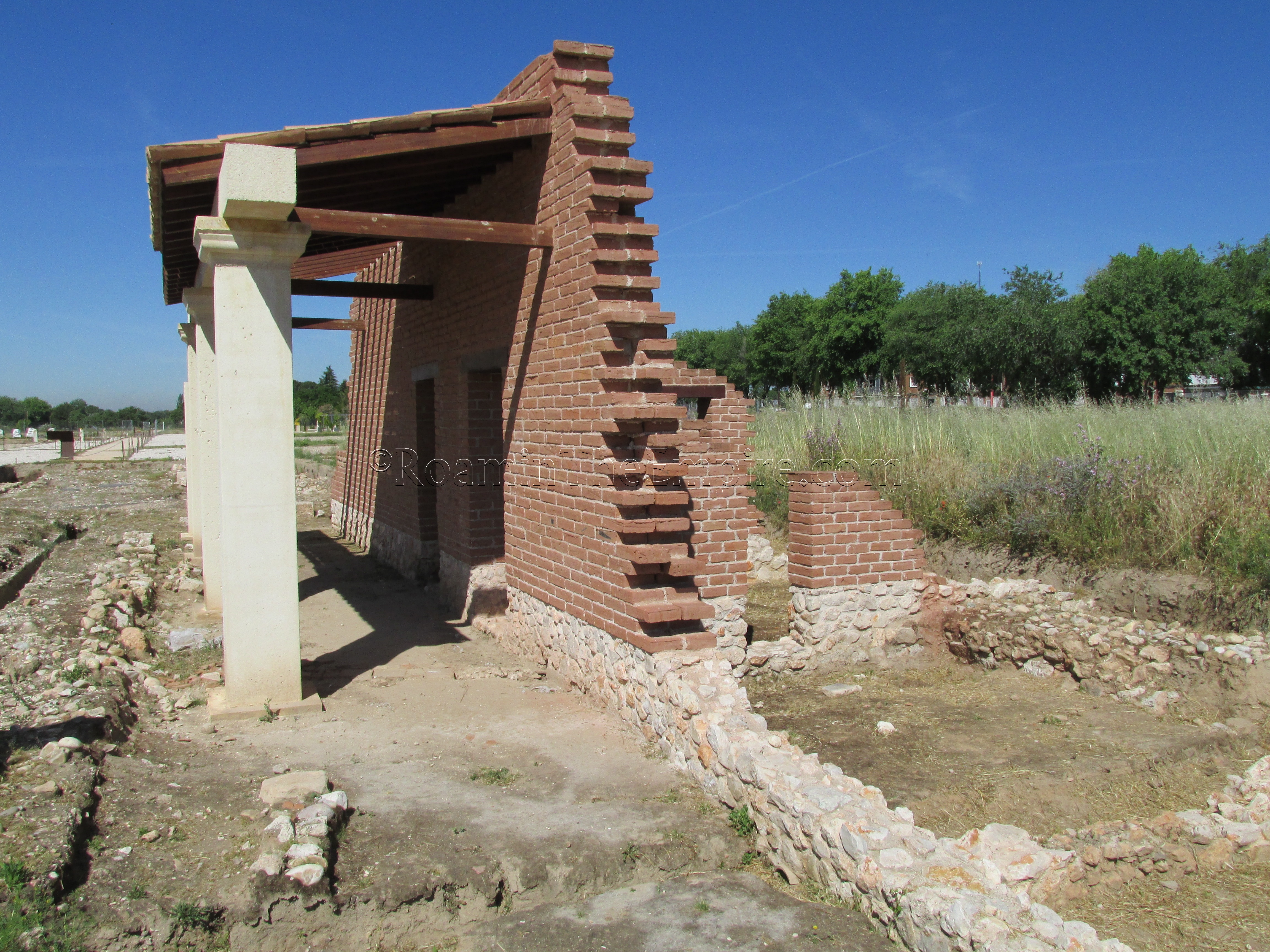
Decumanus III continues east and hits a dead end (at least insomuch as one can no longer continue walking down it) where the street has been excavated. The intersection of Decumanus III and Cardo IV is included in the area excavated. A little further east past the intersection, on the north side of the street, are the remains of the auguraculum, with a modern reconstruction of the street front and portico lining Decumanus III. Even when approached from the east, the reconstruction unfortunately hides a fair amount of the remains of the auguraculum, which seem to date an initial construction to about 50-60 CE.
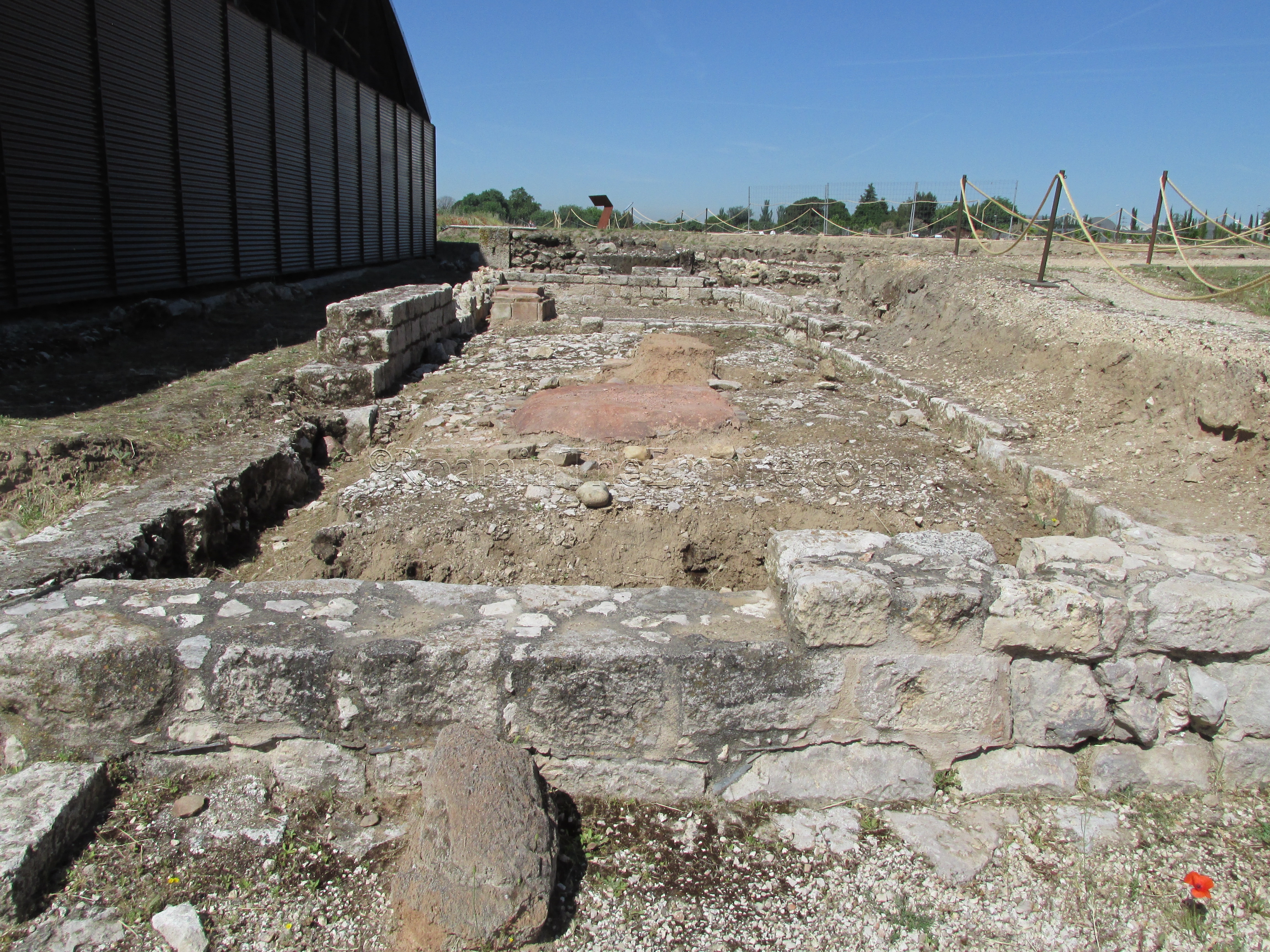
To continue on with the site tour, it is necessary to backtrack and drop south to Decumanus IV. This also essentially ends in a dead end, but there is an artificially constructed path that cuts diagonally across a largely excavated insula, Manzana I. The large domed structure to the south is a housing for the Casa de los Grifos. The large, wealthy dwelling apparently houses some well-preserved mosaics and other features, which is presumably why the housing was built. Unfortunately, it was not accessible when I visited, and I was not aware of any timetable for when/if it was ever open to the public. The bulk of Manzana I is made up of a quadriporticus structure with an origin in the 50-60 CE period, but with major renovations in the periods of 260-300 CE and 340-380 CE.
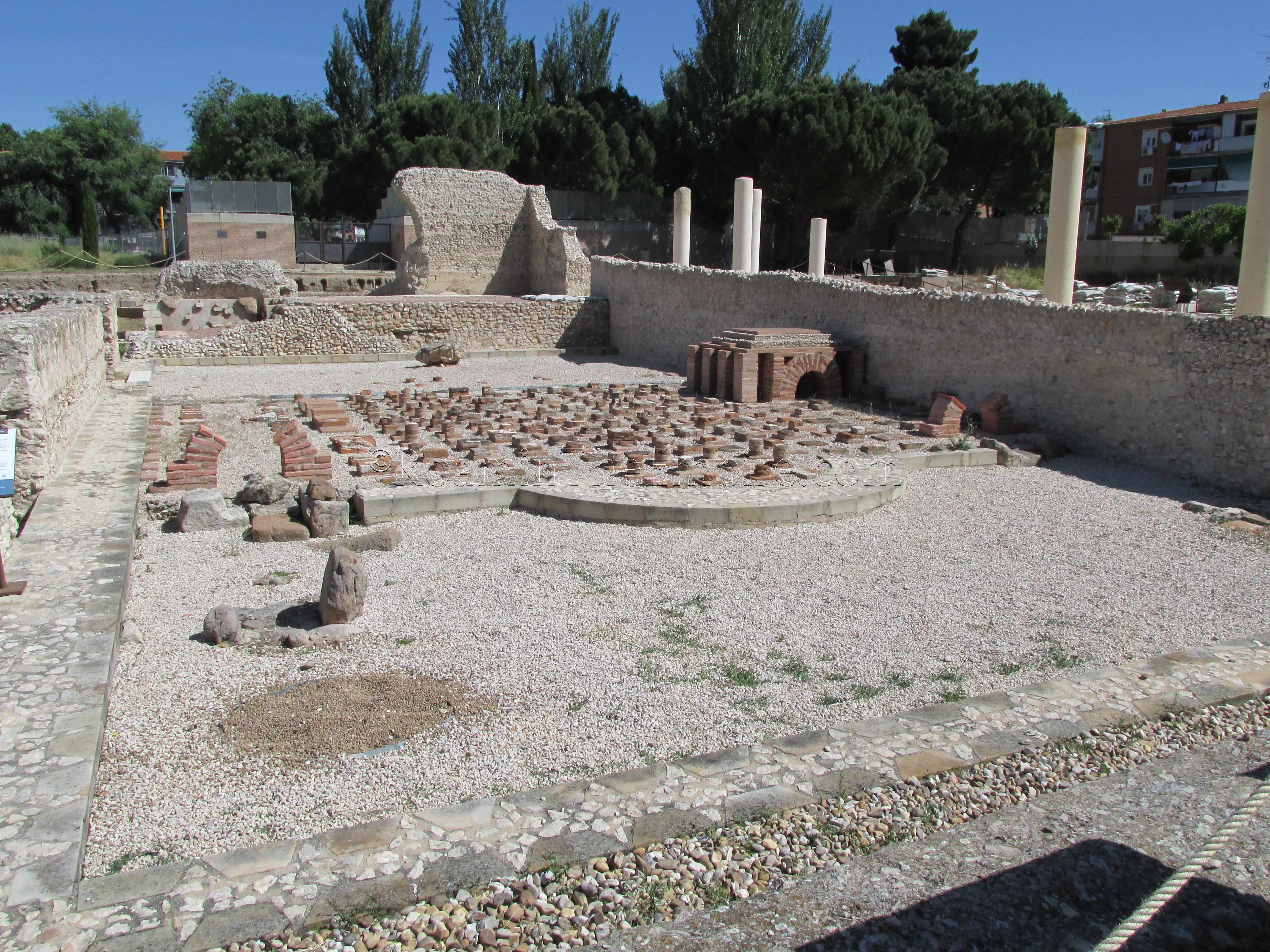
East of the quadriporticus are the remains a monumental façade of some of the core buildings of the forum area. On the immediate interior of the façade is a cryptoporticus with a very small portion of the curved vaulting for the roof remaining. This cryptoporticus originally gave access and ran parallel to a bathing complex (the Northern Baths) that was constructed in the original building period (50-60 CE). In the 3rd century CE, however, the area of the baths were converted into a curia. Most of the hydraulic elements were removed, though the hypocaust system (the remnants of which are still displayed) of the caldarium and the praefurnium remained in place to heat the new building, which took up the area of the caldarium and tepidarium. The natatio and frigidarium areas were converted into an area that allowed direct access to the basilica to the east. The original limits of the bathing complex rooms are still delineated.
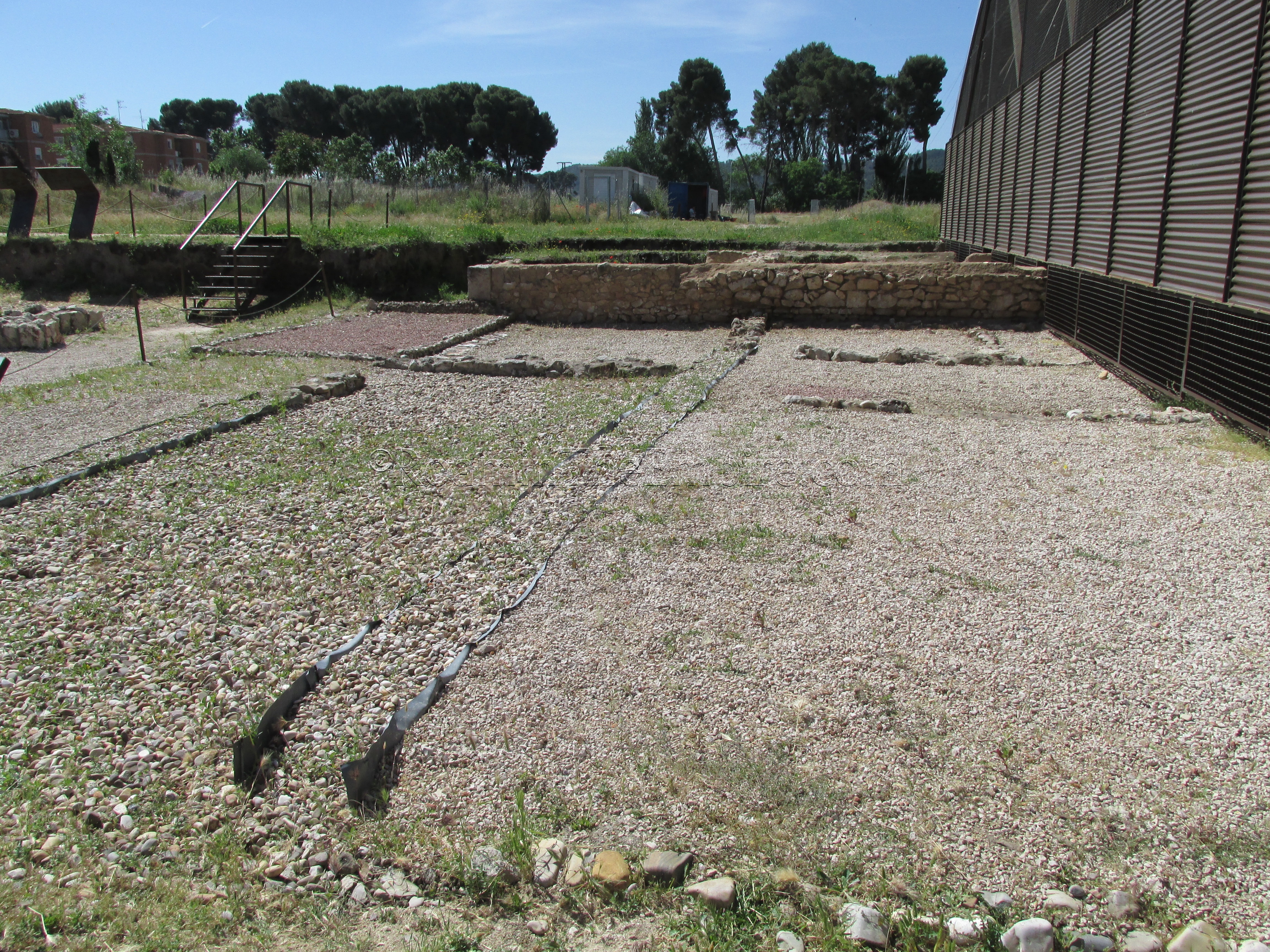
South of the Northern Baths was an area that was originally a macellum constructed in the first building phase of the settlement. The macellum was apparently owned by the residents of the Casa de los Grifos when it was first built. Later, during renovations of the forum area, though, the macellum structure was demolished and replaced by an open area that featured wooden stalls.
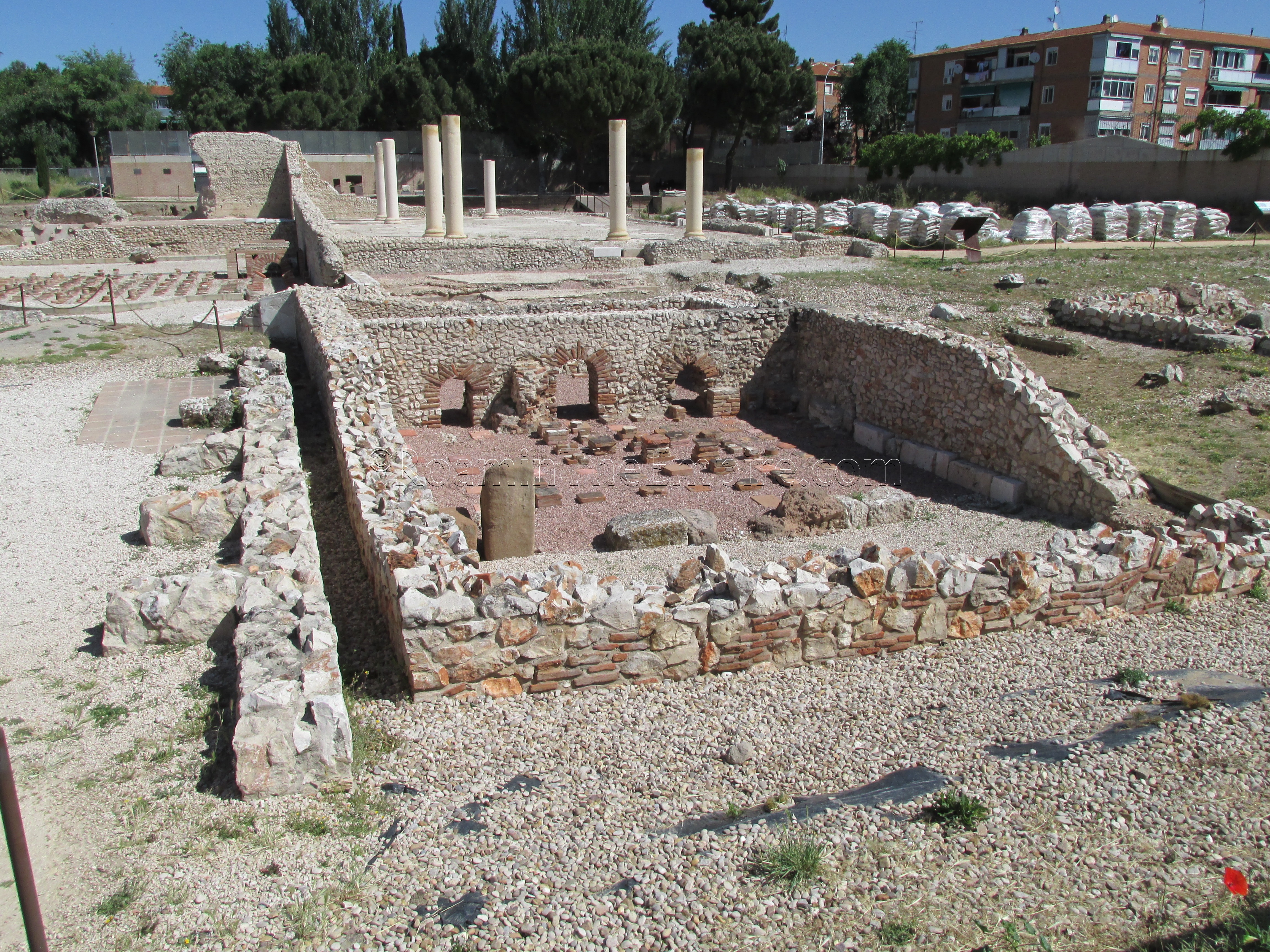
To the east of the macellum, and south of the basilica, was another bathing complex now called the Forum Baths. The Forum Baths were a fair size smaller than the Northern Baths, and were built in the 4th century CE, after the Northern Baths had been converted into the curia. Some of the building materials used in the Forum Baths seems to have been taken from the Northern Baths.

East of the Forum Baths are the remains of a portico that ran along the southern portion of the forum and a few associated tabernae. North of this area, and east of the basilica is an open area that would have made up the western portion of the forum. Unfortunately, there doesn’t seem to be any material remains of the actual forum present, and the area seems to be used largely for storage.
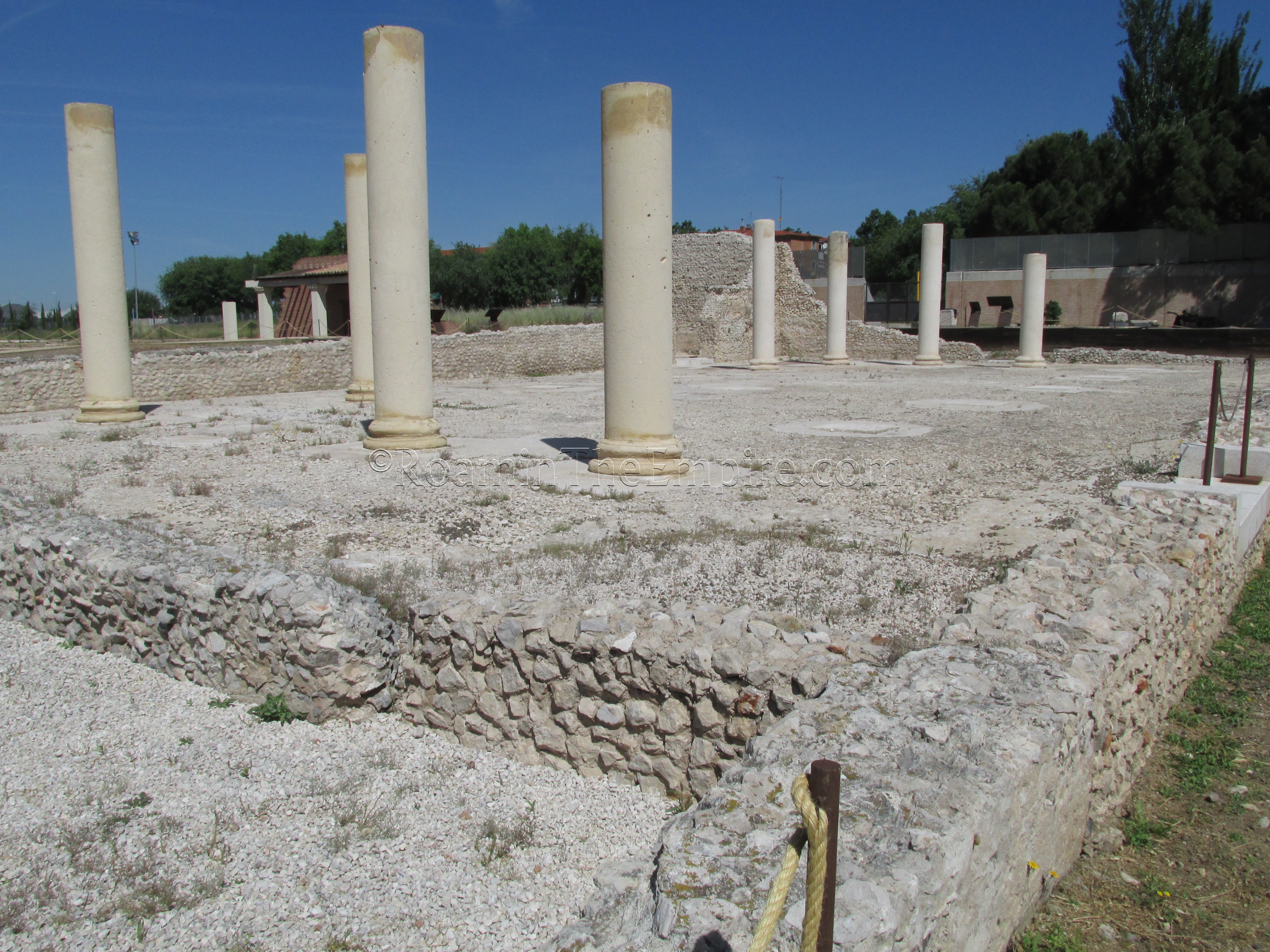
The route around the site then takes one along the eastern side of the basilica, raised up on a platform above most of the other remains, and along another excavated portion of Decumanus III that runs along the north side of the basilica and Northern Baths. The basilica was another building originally constructed during the first building phase, and later renovated extensively in the 3rd century CE. The sewer channel running under Decumans III is visible in the stretch excavated north of the basilica. Continuing along the bath brings one back to the eastern side of the auguraculum.
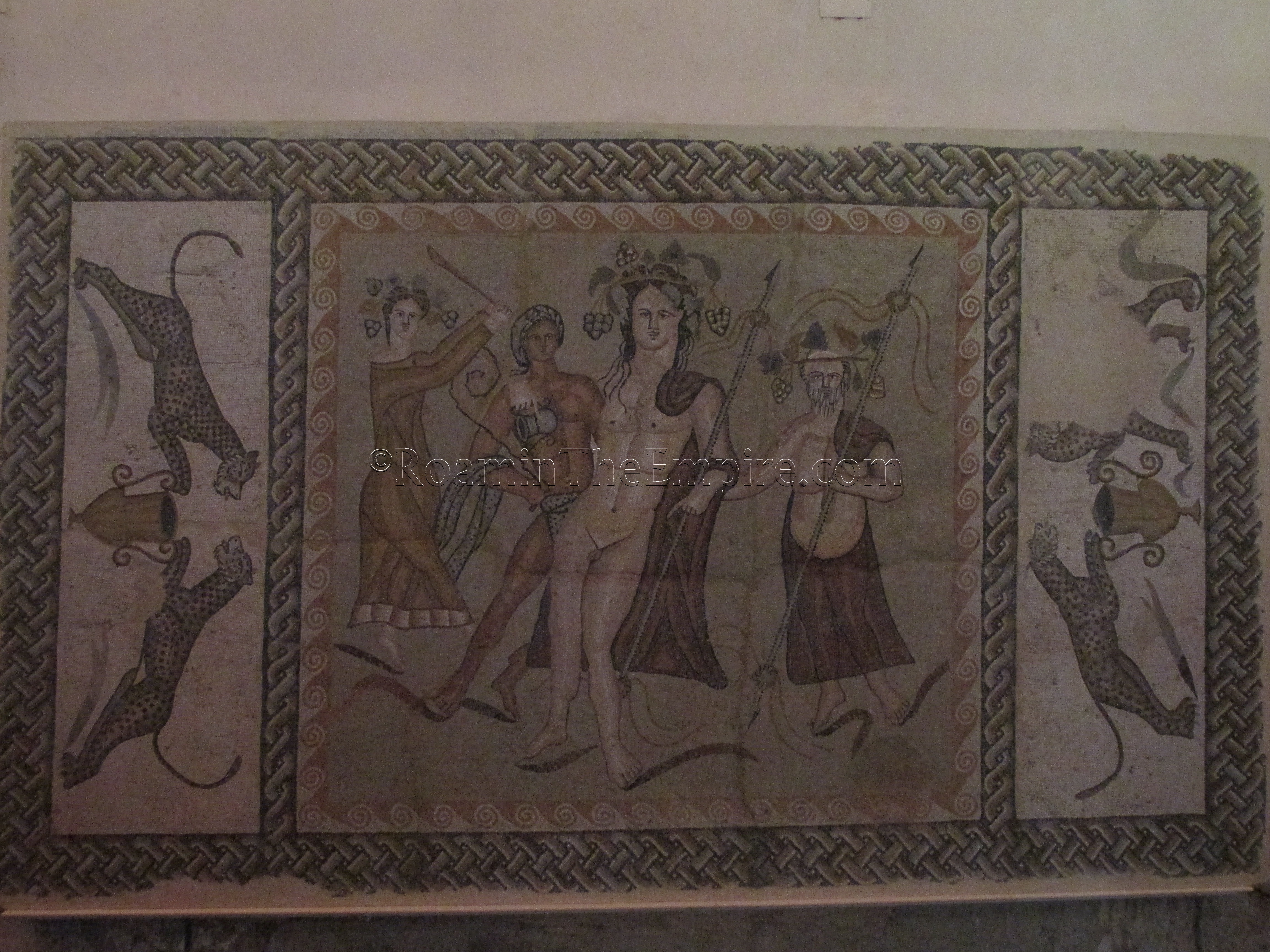
From the Complutum site, the Museo Arqueológico Regional de la Comunidad de Madrid is about a 20-30 minute walk. While the route is relatively straightforward, the distance probably lends itself better to a map than written instructions, which can be found in Part I here. Basically, follow the street that runs along the north side of the archaeological park towards the east (first Camino del Juncal and then Calle de Núñez de Guzmán). Eventually the street curves to the north and then runs into a roundabout. Take the exit to the east (right) and follow it a short distance to the Puerta de Madrid, an 18th century gate. Following the course of the northernmost road (while still going east) will end up at the archaeological museum after a few minutes.
The Museo Arqueológico Regional de la Comunidad de Madrid is open from 11:00-19:00 from Tuesday to Saturday, and from 11:00-15:00 on Sunday. The museum is closed on Mondays. Admission to the museum is free.
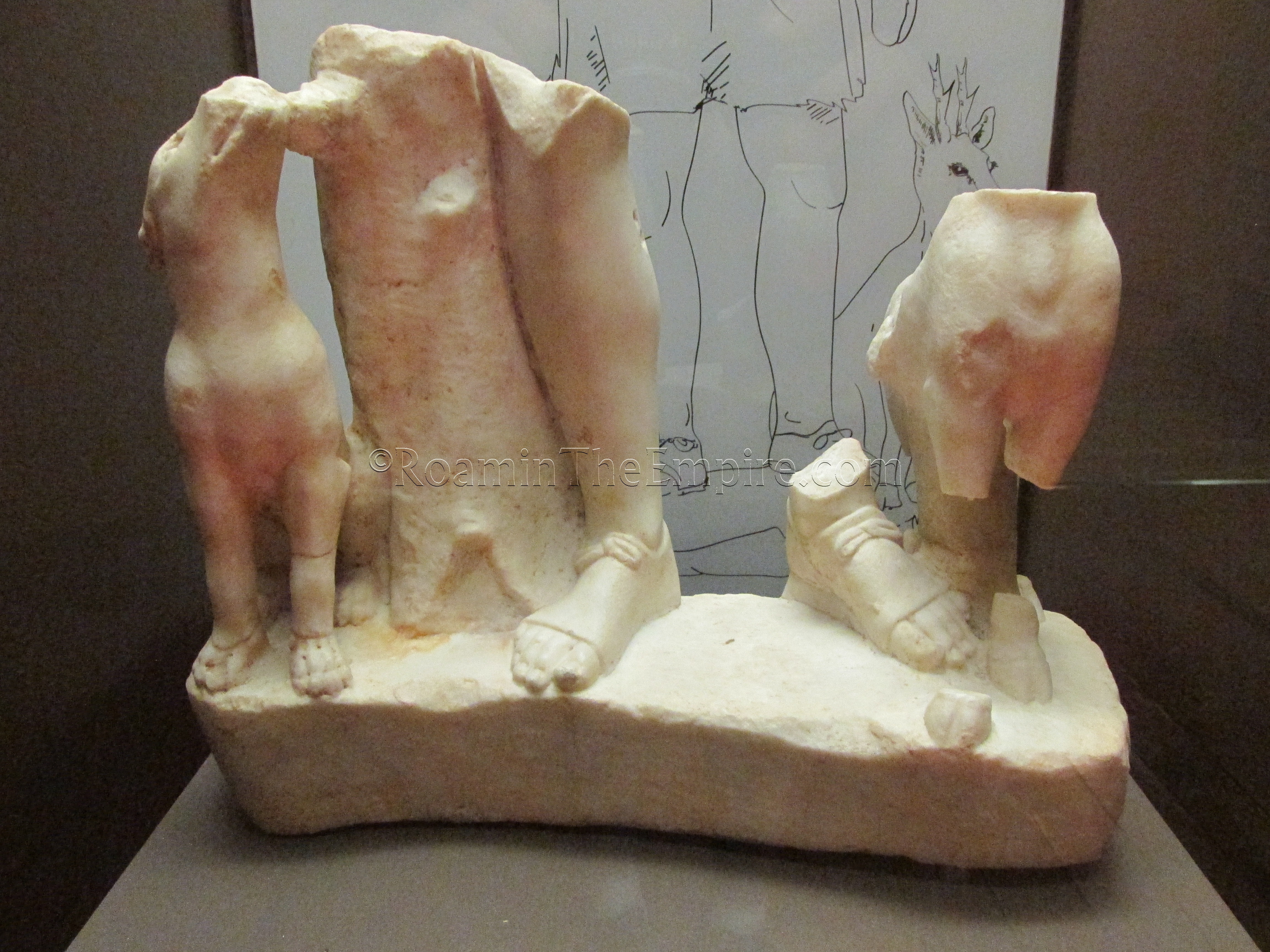
The base collection of the museum is not exceptionally large, even with the sizable temporary exhibition on the Scipios and the conquest of Hispania, it only took me a little over an hour to get through the museum. The museum includes pieces from all time periods in the history of the area, but I didn’t spend as much time with the post-Roman or pre-Celto-Iberian as one could probably spend (as I was also going to attempt to do the National Archaeological Museum in Madrid that afternoon).
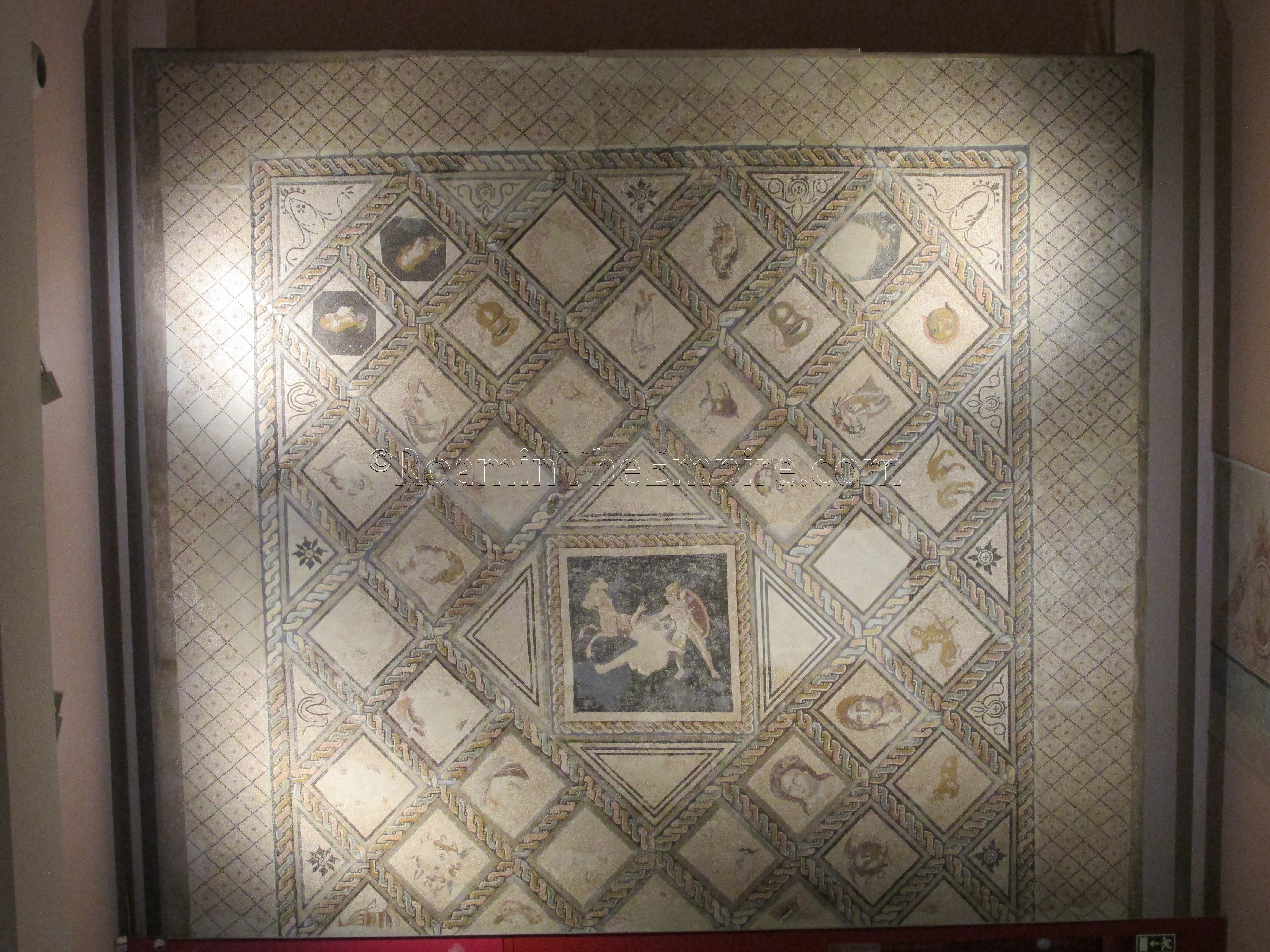
In addition to the typical finds of funerary stele and grave goods, the museum has a few nice mosaics from wealthy private dwellings in Complutum. One of the highlights of the collection is a large wall-mounted mosaic with a central panel scene of Achilles and Penthesilea.
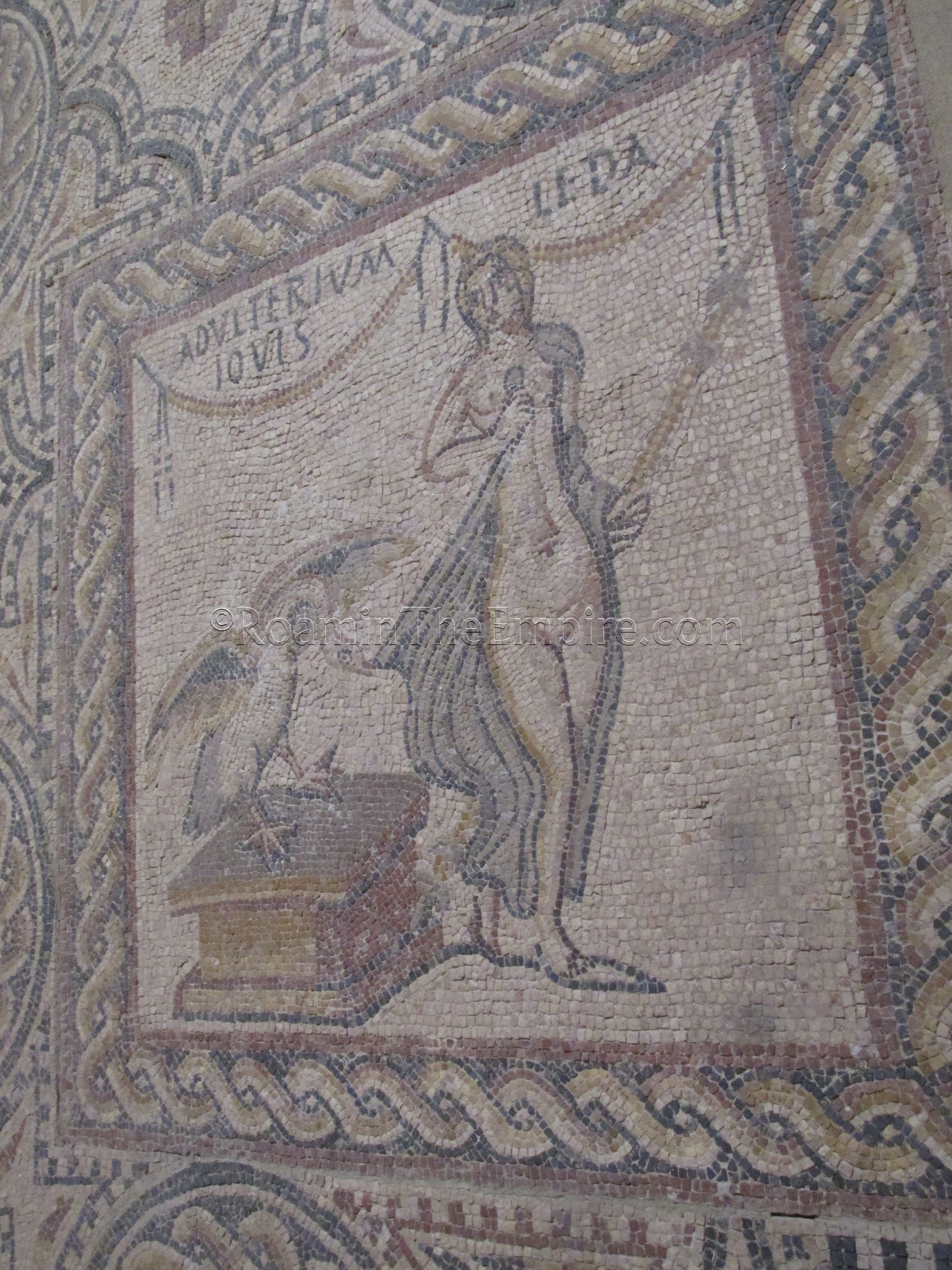
Other mosaics depict the myth of Leda and the Swan as well as one with a depiction of Bacchus. The partial statue of Diana from the Casa de Hippolytus is also displayed at the museum.
Despite the smaller collection, the price makes the museum a worthwhile stop while in Alcalá de Henares. While both the archaeological sites had ample English information displayed, though, there were no English descriptions of the objects at the museum.
Sources:
Site placards.



